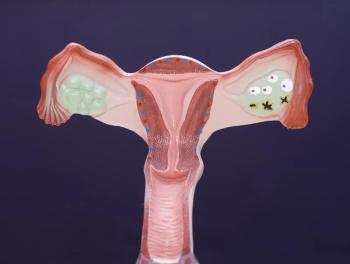
Decrease in Bone Mineral Density After Pelvic Radiotherapy in Gynecologic Cancers
These findings indicate that bone mineral density screening and pharmacologic intervention should be strongly considered for these high-risk women.
A study published in Cancer found that a high proportion of women with gynecologic cancers had significant decreases in bone mineral density (BMD) following pelvic radiotherapy, with 7.8% of women in the study diagnosed with a pelvic fracture.
These findings indicate that BMD screening and pharmacologic intervention should be strongly considered for these high-risk women.
“To date, there are limited data regarding the effects of [radiotherapy] on the bone turnover process,” the authors wrote. “Bone remodeling or turnover is a complex process involving osteoblasts (bone formation) and osteoclasts (bone resorption). [Radiotherapy] has been shown to directly affect this process and result in reduction in overall bone mass.”
Researchers retrospectively evaluated 239 women who had pelvic radiotherapy for cervical, endometrial, or vaginal cancer between 2008 and 2015. BMD scans and biomarkers of bone turnover were obtained at the baseline and 3 months, 1 year, and 2 years after radiotherapy. Imaging studies were then assessed for pelvic fractures for up to 5 years, and patients with osteopenia, osteoporosis, or pelvic fractures at any point were referred to the endocrinology service for evaluation and treatment.
The primary diagnoses within the cohort were cervical (63.6%), endometrial (30.5%), and vaginal cancer (5.9%). Overall, 16 patients (7.8%; 95% CI, 4.5-12.4) had pelvic fractures with actuarial rates of 3.6%, 12.7%, and 15.7% at 1, 2, and 3 years, respectively.
Fractures were associated with baseline osteoporosis (P < 0.001), higher baseline bone-specific alkaline phosphatase (P < 0.001), and older age (P = 0.007). The proportion of patients who had osteopenia/osteoporosis increased from 50% at the baseline to 58%, 59%, and 70% at 3 months, 1 year, and 2 years, respectively.
Moreover, 52.2% of the study subjects reported pain at the time of the fracture diagnosis. It is unknown whether imaging was performed only for symptomatic patients, however this would explain the low reported fracture rate in comparison with previous studies.
“Our results suggest that pelvic fractures and changes in BMD were detected in a substantial proportion of women after [radiotherapy] for gynecologic malignancies,” the authors wrote. “Preventative strategies such as BMD screening and medical regimens for preventing osteoporosis should be considered to improve survivorship for these high-risk women.”
Notably, this study was limited given that the data are from a single institution that is a highly specialized cancer center, which could have led to a possible referral bias. Additionally, the researchers indicated that the bone toxicity mentioned in the study requires further evaluation to determine the impact on gynecologic cancer survivorship and generalizability to broader populations.
However, an important strength of the study is the large number of patients with cervical, endometrial, or vaginal cancer and prospective data collection, including BMD measurements. Additionally, the authors indicated that changes in radiation techniques for high-risk individuals to minimize the radiation dose to the bone are currently being investigated.
Reference:
Salcedo MP, Sood AK, Jhingran A, et al. Pelvic Fractures and Changes in Bone Mineral Density After Radiotherapy for Cervical, Endometrial, and Vaginal Cancer: A Prospective Study of 239 Women. Cancer. doi:10.1002/cncr.32807.
Newsletter
Stay up to date on recent advances in the multidisciplinary approach to cancer.
































































































